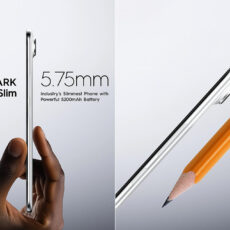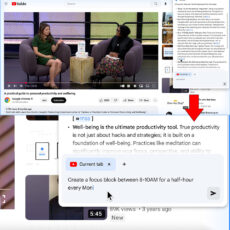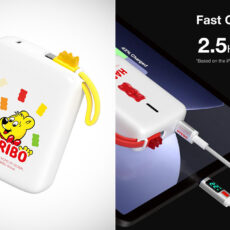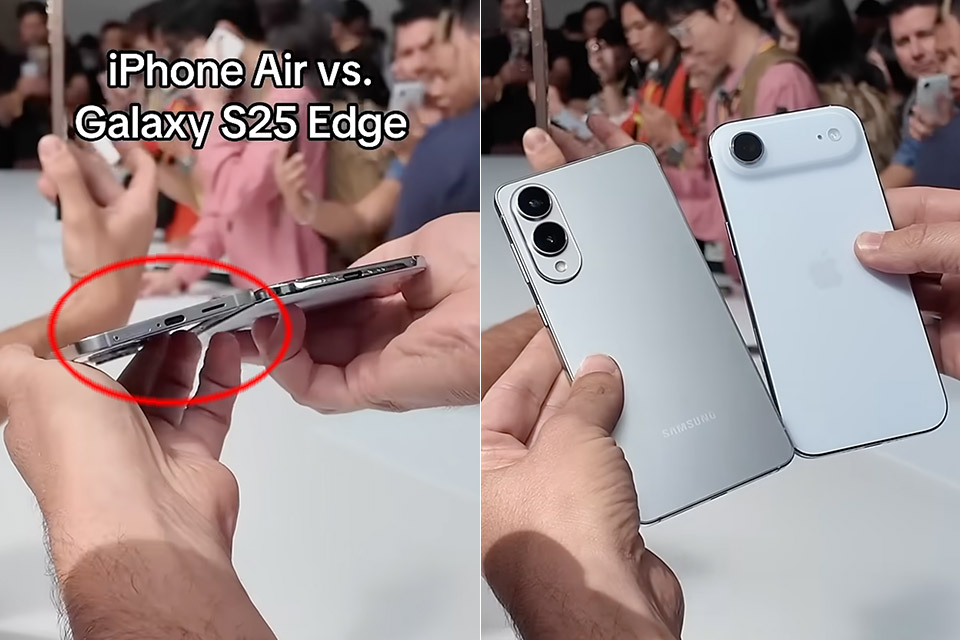
Tomorrow, the iPhone Air hits stores for $999 with sleekness. Samsung’s Galaxy S25 Edge, priced at $699.99 (down from $1,099.99) has been turning heads since May, with its focus on slimness. Both phones want to redefine what a flagship feels like in your hand, but their approaches are different in ways that make this comparison fun.
Apple and Samsung have gone all in on making their phones as thin as possible and the results are stunning. The iPhone Air is 5.6mm thick and 165 grams with a grade 5 titanium frame and Ceramic Shield 2 glass on both sides. Its Sky Blue, Light Gold, Cloud White and Space Black finishes are so pretty you almost don’t want to put a case on it. The Galaxy S25 Edge is 5.8mm and 163 grams with a titanium frame and Gorilla Glass Ceramic 2. Its Titanium Icyblue, Jetblack and Silver options lean into a futuristic look. Both phones are IP68 rated for dust and water but the iPhone Air can go underwater up to 6 meters while the S25 Edge maxes out at 1.5 meters. Holding them side by side the iPhone feels slightly more refined but the Samsung’s slightly curved edges make it a bit easier to grip.
- SUPER SLIM. SUPER LIGHT: Galaxy S25 Edge is surprisingly light and our slimmest S Series phone yet. You’ll want to show off this sleek, super-slim...
- OUR POWERFUL 200MP CAMERA ON OUR SLIMMEST S SERIES PHONE: Capture every memory in stunning clarity with our highest-resolution camera on a Galaxy...
- MORE POWER TO YOU: Reimagine what’s possible with Galaxy S25 Edge, featuring our most powerful processor yet. Effortlessly translate your calls,...
Screen size and quality can make or break a phone’s appeal. The Galaxy S25 Edge has a 6.7-inch Dynamic AMOLED 2X display with a 1440 x 3120 resolution and 513 pixels per inch. Its 120Hz adaptive refresh rate keeps scrolling smooth and HDR10+ support with Vision Booster means vibrant colors and readability in sunlight. The iPhone Air has a 6.5-inch Super Retina XDR OLED at 2736 x 1260 and 460 pixels per inch. Apple’s display is brighter up to 3000 nits for HDR content and its ProMotion matches Samsung’s 120Hz refresh rate. Dolby Vision gives the iPhone an edge for cinematic viewing but the S25 Edge has higher resolution so text and images are crisper. Choose between them based on whether you want brightness or sharpness.
The iPhone Air is powered by Apple’s A19 Pro CPU, a 3nm beast for gaming, AI and smooth multitasking. With 8GB of RAM and iOS 26 it’s seamless, scoring 3736 in single-core Geekbench 6 and 2033K in AnTuTu. The Galaxy S25 Edge is powered by Qualcomm’s Snapdragon 8 Elite, a 3nm processor and comes with 12GB of RAM and One UI 7 on Android 15. It beats the iPhone in AnTuTu at 2262K and has two extra CPU cores for heavy lifting. Both phones handle demanding games and apps well but the S25 Edge has a tiny edge for hardcore users who multitask. Apple’s software-hardware integration makes the iPhone Air feel fast while Samsung’s flexibility is for those who love to customize.
Photography is where these phones flex their muscles differently. The iPhone Air has a single 48MP Fusion camera on the back and an 18MP front camera with Center Stage and Dual Capture for dynamic selfies. With a NanoReview score of 90, Apple’s computational photography is amazing for detail and color accuracy especially in low light. The Galaxy S25 Edge has two cameras: a 200MP main sensor and a 12MP ultra wide. Its 12MP front camera is good but lacks the iPhone’s style. The S25 Edge’s higher resolution means crisper zoomed in images and its ultra wide lens gives it more versatility, so it scores 79. If you like creative features like wide angle shots, Samsung is the clear winner.
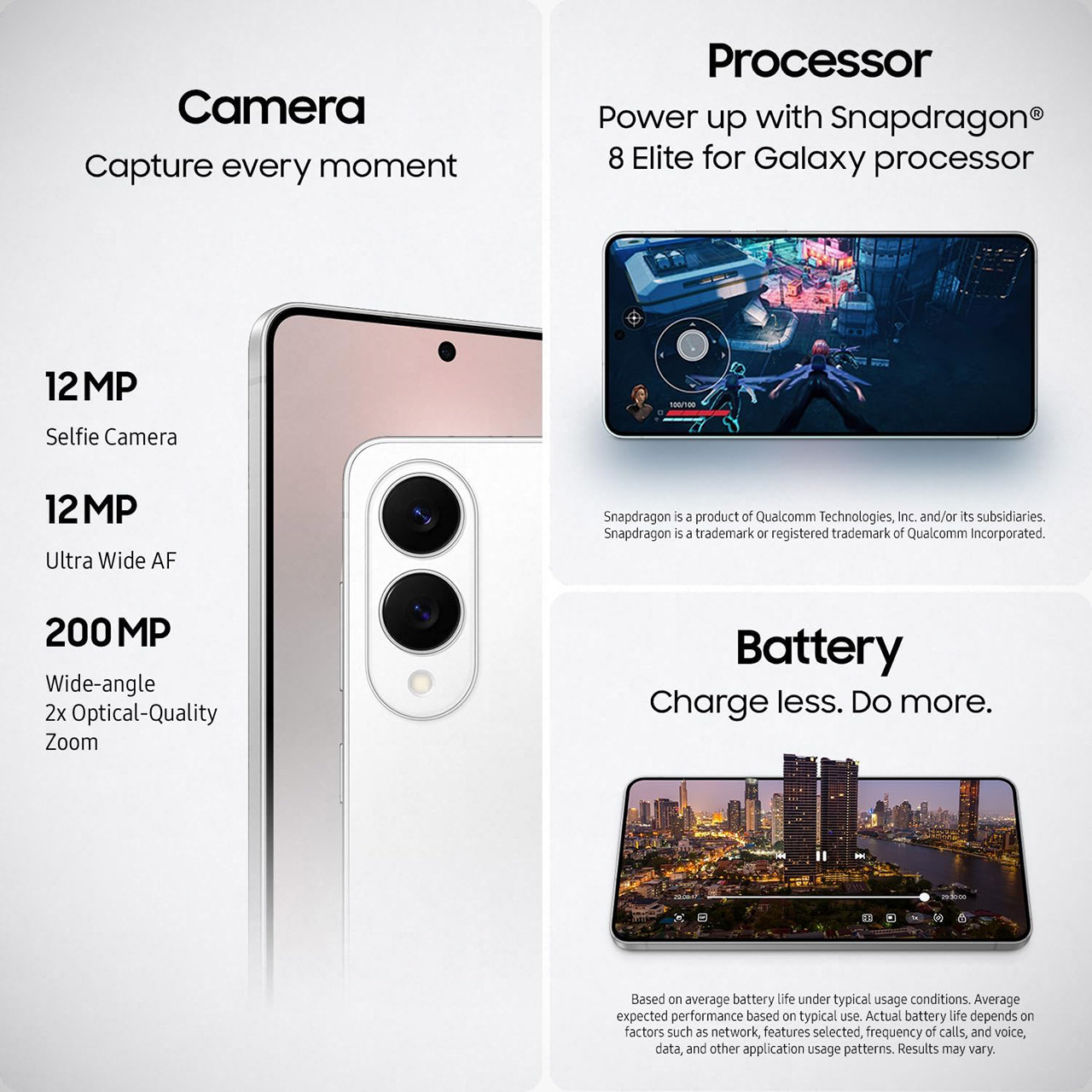
Slimmer designs often mean smaller batteries and both phones make compromises in this area. The iPhone Air’s battery is 2800mAh which is smaller than the S25 Edge’s 3900mAh. Both have fast charging but neither comes with a charger in the box. The iPhone Air has reverse charging which is useful for powering up accessories like AirPods. In real life both phones last a full day but the S25 Edge’s bigger battery gives it an edge for heavier users, NanoReview scores them 66 for battery life. Apple’s optimisation gets amazing life out of its smaller battery and its longer movie playback time (up to 20 hours vs Samsung’s 17) makes it a strong contender for media lovers.





